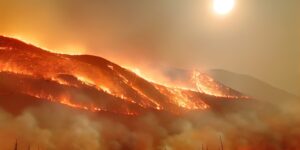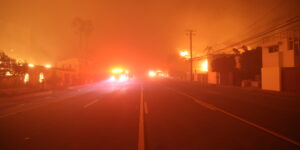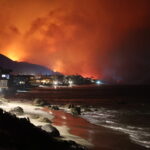A tornado outbreak in the South and a storm on the East Coast spanning January 8-10th, 2024, caused $1.7 billion in damage, according to data provided by the National Oceanic and Atmospheric Association’s (NOAA) National Centers for Environmental Information.
There were 432 reports of severe weather across the Southeast in January, well above the median frequency of 58 reports over the period 2000 to 2022 (744 percent of normal).
There were 38 confirmed tornadoes (14 EF-0s, 17 EF-1s, 6 EF-2s, 1 EF-3), also more than the median frequency of eight (475 percent of normal).
All except four occurred as part of the severe weather outbreak on January 8th to the 10th, the data showed.
The strongest tornado was an EF-3 that caused significant damage around Panama City Beach, Florida.
Two tornado-related fatalities were confirmed from this outbreak, both in manufactured homes.
A total of 14 injuries were also confirmed from these tornadoes, NOAA reported.
There were 388 wind reports in January, above the median frequency of 48 reports (808 percent normal).
Many of the wind events occurred as part of the severe weather outbreak from January 8th to the 10th.
Gusts of 50 to 60 mph (22 to 27 m/s), some higher, were reported across a large portion of the region.
A powerful bomb cyclone produced cold temperatures, strong winds and heavy snow to portions of the Northwest on January 8th–10th, resulting in Seattle’s National Weather Service location issuing the first blizzard warning in over 11 years for the region, the NOAA agency said.
Portions of New England, such as Maine and New Hampshire, reported up to 15 inches of snow, the weather service stated.
The area from southern Maryland into southern New England noted some of the highest precipitation totals.
In many areas, the ground was already saturated and waterways were running above normal due to previous storms.
Many structures and roads along Maine’s coast were damaged, including a historic lighthouse featured on the state’s quarter, while some washed out to sea, NOAA reported.
Several people suffered storm-related injuries.
It was the seventh wettest January since record-keeping began in 1895 for the Northeast, which received 5.07 inches of precipitation, 155 percent of normal the data showed.
Figures provided by NOAA National Centers for Environmental Information (NCEI) U.S. Billion-Dollar Weather and Climate Disasters (2024).




















 Moody’s Global P/C Outlook Now Stable Despite Past-Peak Commercial Pricing
Moody’s Global P/C Outlook Now Stable Despite Past-Peak Commercial Pricing  California Wildfires Will Likely Lead to Large Economic and Insured Losses
California Wildfires Will Likely Lead to Large Economic and Insured Losses  California Insurers Required to Increase Home Coverage in High Risk Wildfire Areas
California Insurers Required to Increase Home Coverage in High Risk Wildfire Areas  Reinsurers in Growth Mode Brought Capacity, Flexibility to 1/1 Renewals
Reinsurers in Growth Mode Brought Capacity, Flexibility to 1/1 Renewals 